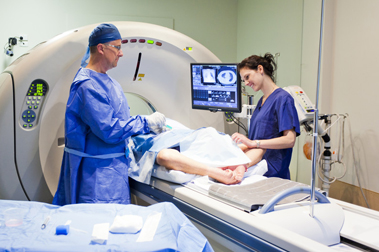 Along with reports on biopsy, blood tests and Positron Emission Tomography (PET), oncology medical transcription also involves transcribing dictations related to several imaging tests including X-rays, CT scans, MRI and Ultrasound. Newer imaging modalities like magnetic resonance spectroscopic imaging (MRSI) also offer the potential to detect cancers in the prostate.
Along with reports on biopsy, blood tests and Positron Emission Tomography (PET), oncology medical transcription also involves transcribing dictations related to several imaging tests including X-rays, CT scans, MRI and Ultrasound. Newer imaging modalities like magnetic resonance spectroscopic imaging (MRSI) also offer the potential to detect cancers in the prostate.
These imaging studies help oncologists to determine clinical stage and take initial treatment decisions such as the appropriateness of upfront surgery versus systemic therapy. Imaging studies are also used to monitor response to treatment including defining the events of tumor remission, recurrence, and progression.
A recent research from Thomas Jefferson University found that the imaging test developed by their team is much better at detecting prostate cancer than any other tests in use today such as biopsy or blood. This newly developed imaging test was reported to detect even more cancerous lesions than what pathologists found when they examined the prostate glands after they were removed. With more and more use of such imaging studies, reliable documentation of these reports is becoming crucial.
Oncologists and radiologists often communicate through various forms of clinical documentation such as paper or electronic radiology requisitions, and radiology reports summarizing the findings. With accurate documentation of imaging reports, patient care is also enhanced.
The oncologist reviews the radiology report and images to make diagnostic and treatment decisions. Imaging studies are sometimes dictated as operative reports or procedure notes, particularly if the procedure was performed in an operating room. Oncology reports include:
- Clinical notes that include discrepancies with previous findings
- A paper or electronic radiology requisition form that the oncologist used to order the study
- Demographics that include name of the patient, type and date of examination
- Impression (conclusion or diagnosis) that reports specific or differential diagnosis and any significant patient reaction
- Clinical trial protocol that specifies the frequency with which imaging studies should be acquired
- Medical chart that notes any action taken or initiated by a clinician or team member in response to a lab test result or imaging test report
Apart from diagnosis, treatments such as radiation therapy also need to be recorded in radiation oncology. While transcribing these imaging documents, the transcriptionist must be familiar with X-ray views, anatomical planes of the body, and other imaging test processes. Formatting of X-ray reports differ from one facility to another. While outsourcing their transcription tasks, oncologists, radiologists as well as radiation oncologists must make sure to choose a medical transcription company that provides services of transcriptionists experienced in transcribing for the oncology specialty.

